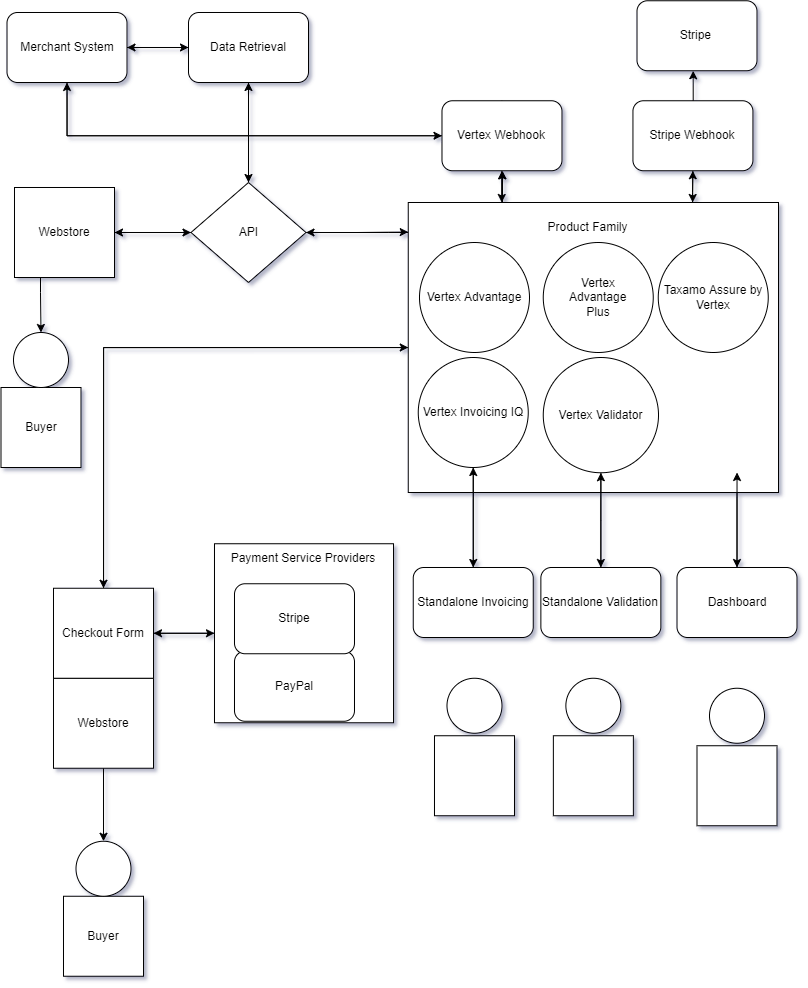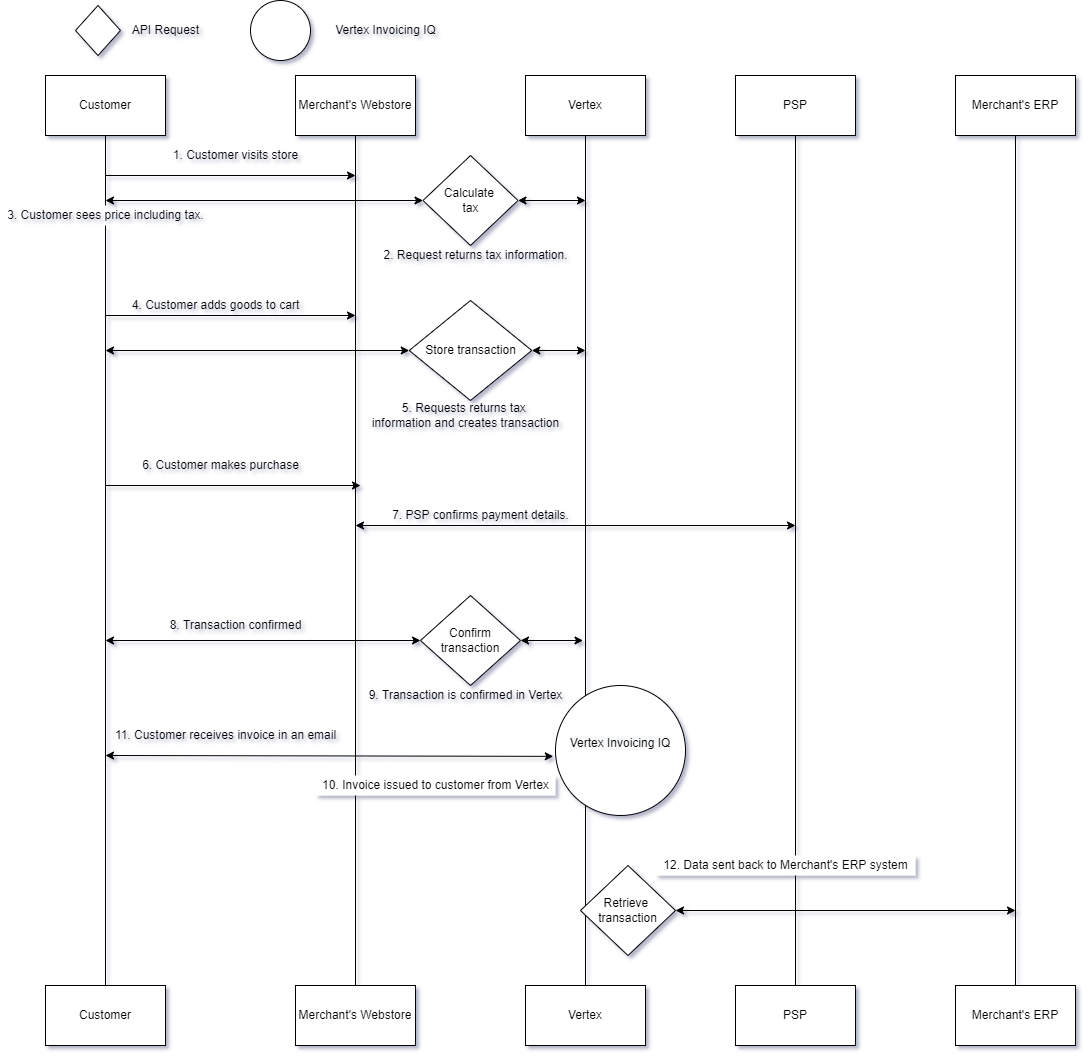Product Overview
The documentation here consists of documentation for the following products:
- Vertex for e-Commerce (formerly Vertex Advantage)
- Vertex Advantage Plus
- Taxamo Assure by Vertex
- Vertex Invoice IQ
- Vertex Validator
These products share common configuration options, UIs and API endpoints. Where applicable, features that apply exclusively to a specific product will be documented as such.
Features Matrix
X indicates that the feature is available for the that product. A blank space means that it is not available.
| Feature | Vertex for e-Commerce | Taxamo Assure by Vertex |
|---|---|---|
| Tax calculation | X | X |
| Location determination | X | X |
| Threshold monitoring | X | |
| Tax ID validation | X | X |
| Foreign exchange management | X | X |
| Compliant invoices | X | X |
| VAT/GST liability shifts to Taxamo. | X |
Vertex Advantage Plus
Vertex Advantage Plus streamlines international compliance for VAT and GST, delivering an end-to-end solution from registration to filing and remitting the tax. For more information, contact support.
Component Overview
The following graphic shows how the various components interact and are deployed. This graphic is simplified and shows both Direct API and Checkout Form deployment options. In a real example, you would most likely use one of these options.
The core group of products are deployed in one of two options; either directly using the API and or using the Checkout Form. Users can also access independent modules like Vertex Validator and Vertex Invoice IQ as a stand-alone products or as part of the other products. The integration points for Payment Service Providers (PSP) in the Checkout Form is also shown. Methods to access data from the dashboard, directly from the API or using webhooks are also shown.

Component Overview
Components Matrix
The following components are available for both Vertex Advantage and Taxamo Assure by Vertex:
- Checkout Form
- Direct API Integration
- Vertex Validator
- Vertex Invoicing IQ
- Single Sign-On (SSO)
- Webhooks
- Dashboard
Deployment Options
The service can be integrated using the following options:
- Checkout Form: A pre-built integration with payment providers that can be launched with a link or through our convenient JavaScript interface. For more information, see Checkout Form Overview.
- Direct API integration: Integrate the product into the checkout process while maintaining complete control over the sequence of calls, using the API to integrate directly with your checkout processes. For more information, see Direct API Integration Overview.
In addition, webhooks are also provided. A webhook is a method to provide other applications with information asynchronously. Unlike other APIs there is no need to poll data to keep it up-to-date.
You can use the Stripe Webhook to integrate the Checkout Form with Stripe. The Vertex webhook can be used to retrieve data from the service.
For more information, see Webhooks Overview.
There is also an additional method of deployment, known as the Drop-In UI. This requires support to help enable it. The Drop-In UI enables you to attach the service's UI logic to existing DOM tree elements. For more information, see Drop-In UI Overview.
Checkout Process Integration
After the configuration is complete, the features of the service are integrated with your checkout processes.
This example shows a process flow that illustrates how the service can be integrated with your webstore using a direct API integration. The steps here are designed to illustrate a typical transaction flow from viewing a product's details page, to adding to the basket, to confirming the transaction. Some details have been simplified in this example.
The steps are as follows:
- Customer visits store.
- Request returns tax information.
- Customer sees price including tax.
- Customer adds goods to cart.
- Requests returns tax information and creates transaction.
- Customer makes purchase.
- PSP confirms payment details.
- Transaction confirmed.
- Transaction is confirmed in Vertex.
- Invoice issued to customer from Vertex.
- Customer receives invoice in an email.
- Data sent back to Merchant's ERP system.
This is summarized in the following graphic:

Checkout Process Integration
You can view an example store with the features integrated here.
Updated 3 days ago
